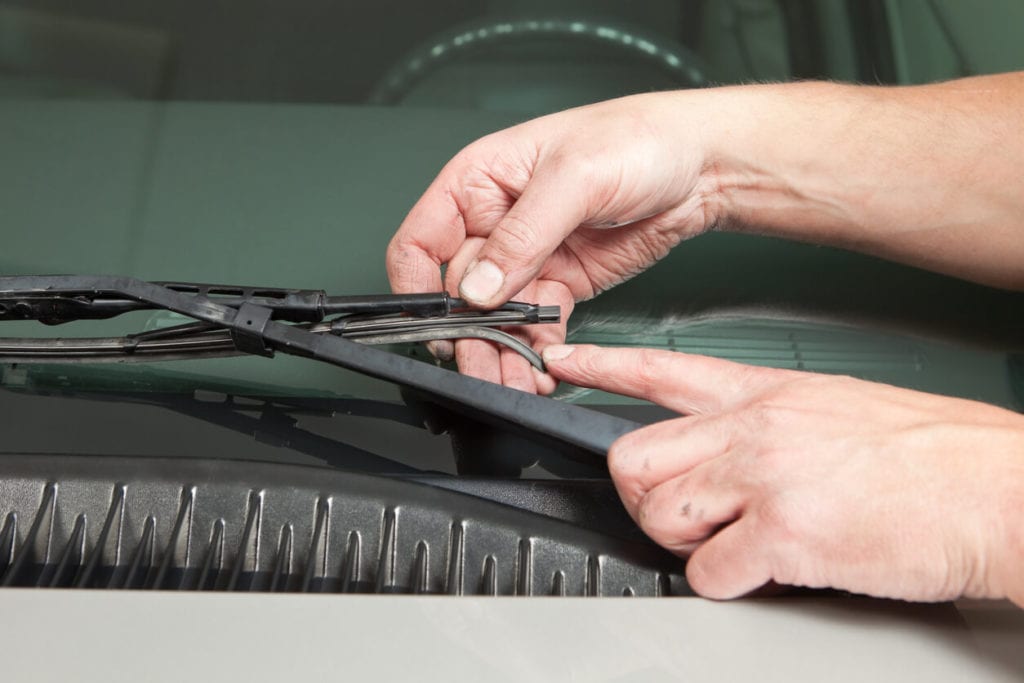 Temperatures are ticking up just a bit and that means that winter is coming to a close and spring is nearly here. Spring is a great time to stretch your legs after the cold winter kept you bundled up inside. Take a weeklong vacation during spring break or just get away for the weekend.
Temperatures are ticking up just a bit and that means that winter is coming to a close and spring is nearly here. Spring is a great time to stretch your legs after the cold winter kept you bundled up inside. Take a weeklong vacation during spring break or just get away for the weekend.
While you put together your “to-do list” of what to pack for your trip, don’t forget to add “Give my car a little TLC” to the list before you leave for your trip. After all, those cold winter days were just as hard on your car as they were for you. You already know how to take care of a car in the winter, but are you prepared for the spring?
By following our after winter car care tips, your car will reward you with a smoother ride and get you to your destination worry-free.
1. Remove Snow Tires
Winter tires are perfect for snowy and icy conditions to help keep you from sliding all over the road, but once the threat of this weather is behind you, there’s no good reason to keep snow tires on your car or truck. The flexible rubber made for winter tires doesn’t fare well in warmer temperatures and begins to wear down, meaning you’ll need to purchase new winter tires sooner than you may have expected. By about March, temperatures should have reached a more consistently warm level making it a good time to switch back to your summer tires.
Didn’t use snow tires this year? Now’s the time to check the air in your tires.
The cold air causes tires to deflate by about 1 PSI for every 10 degrees the temperature drops. Driving on poorly inflated tires, whether overinflated or underinflated, is very dangerous especially when traveling on wet surfaces. When tires are inflated properly, the vehicle handles better, increases fuel efficiency, extends the life of the tires, and makes for shorter braking distance. When testing the air pressure of your tires, be sure to check them while “cold” such as first thing in the morning, before the car has been driven and tires have had a chance to heat up from movement. While checking your air pressure, look closely at the tire treads. It’s important that your tire’s treads wear evenly and are not so worn down that they are unable to grip the road.
2. Scrub Your Car Down
Washing your car has benefits that go beyond making it more appealing to the eye. It helps to remove contaminants that settle onto the paint and cause corrosion. While your car’s exterior finish helps to protect the body panels, the undercarriage is constantly exposed to the elements including dirt, grime, and water that contribute to the development of rust.
While you should wash your car on a regular basis, if you’re in areas where snow is on the ground, you’ll want to wash it more often and ensure the undercarriage is cleaned as well due to the amount of exposure from the salt on winter roads. Road salt helps break down the ice that forms on the surface of the road. While salting is good for the road, it’s not so good for your car. Salt from the roads can cause severe rust damage to metal components on your car. By washing your car regularly, you can help prevent the damaging effects of rust from forming on your vehicle.
3. Replace Windshield Wipers
Your windshield wipers were busy this winter wiping away rain, snow, dirt, and other debris and because they are made of rubber, the colder weather may have caused them to dry out and crack. Since you really should replace your windshield wipers every six months, this is the perfect time to replace your wipers to prepare for the summer rains.
4. Check Your Battery
Cold weather can deplete your battery’s power significantly. At just 32 degrees Fahrenheit, your battery can lose up to 35% power and once temperatures drop down to 0 degrees Fahrenheit, the power loss increases to up to 60%. A battery with significant power loss will struggle to start as the engine requires a lot of power to start. Your battery’s connections should be visually inspected and cleaned and the entire battery should be tested. If the battery’s power level is low or near the low threshold, replace your battery before you wind up stuck with a dead battery.
5. Test Your A/C System
It won’t be long before the warmer temperatures turn to stifling requiring you to put your air conditioner to use. Make sure it is in good working order before the heat makes being without air conditioning unbearable. You can run your own diagnostics by testing the system yourself.
Turn your air conditioning on. Is air coming through the vents? Is the air cold? Does the temperature of the air change when adjusted in either direction as desired? Do you notice any unusual smells? If something doesn’t seem right about your air conditioner, have it inspected by your neighborhood automotive service center.
Sun Auto Service is your partner in auto care. We can help ensure your car is ready to take on spring and every season thereafter. Our expert Technicians include a visual inspection on every vehicle that arrives at our service center to make sure your car is equipped to navigate the road ahead. Our ASE Certified Technicians are able to test your battery, perform an in-depth air conditioning inspection, check your tire’s air pressure, check fluids, and so much more. Our desire at Sun Auto Service is to help keep you on the road. Our friendly Service Advisors can help you plan what maintenance services your car may need to keep you on the road. This spring give your car a little TLC and bring your car to Sun Auto Service for the quality automotive care you can trust.

